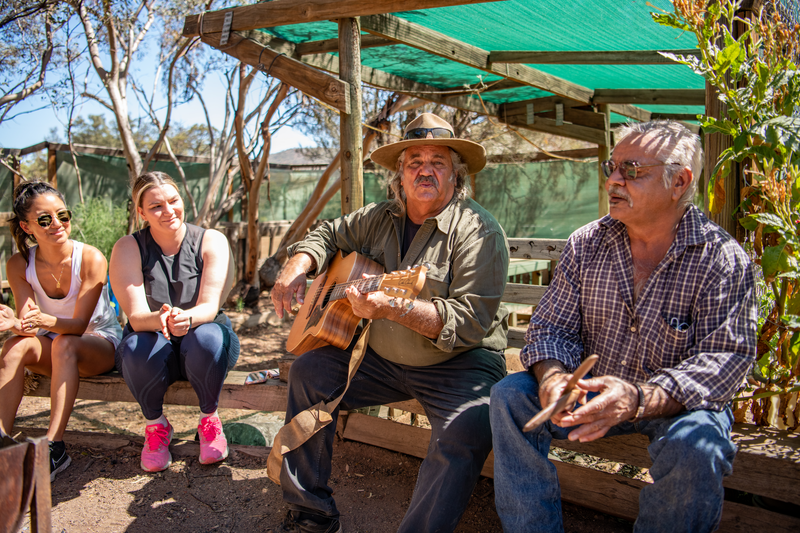Is carbon labelling the big future travel trend that will make your holiday more sustainable?
As more travel companies get serious about measuring their carbon footprints, the next step is providing holidaymakers with the information they need to pick the most sustainable trip. Helen Coffey investigates whether labels could truly help us make more responsible travel choices


Carbon labelling isn’t new, but it is gaining a lot more traction of late – especially when it comes to travel.
The idea is simple; similar to how the nutrition “wheels” on food packaging are designed for easy comparison to help shoppers make healthier choices, carbon labels should be an easy way of comparing products or services to see which are most sustainable at a glance, by providing a comprehensive, numeric footprint.
Increasing numbers of businesses across a variety of sectors are getting onboard with the idea; in the last month alone, oat milk brand Oatly has called on the dairy industry to start carbon labelling products, while exercise tracking app Strava announced a new tool to calculate carbon savings from going for runs, walks, cycles and e-bike rides. Food and drink brands like meat-free alternative Quorn, plant-based energy drinks producer Tenzing and meal kit retailer Mindful Chef are all at the vanguard of introducing labels for their products.
Carbon labels should be an easy way of comparing products or services to see which are most sustainable at a glance
But perhaps one of the industries in which the concept could be most disruptive is travel. It is, after all, one of the most carbon-intensive recreational activities any of us will ever undertake – and one for which the majority of us have little to no idea of the impact. If you break it all down, which is really worse: an all-inclusive cruise round the Bahamas? Or a trip to an eco-lodge in Costa Rica that involves a 24-hour round-trip on a Boeing 787? As a layman, it feels like a Herculean task to figure out if one holiday is “better” than another.
Some pioneering operators started doing the hard work of measuring the impact of trips, down to the smallest element, and posting the results on their packages several years ago. Much Better Adventures led the charge, trialling the idea at the beginning of 2021 – the first international travel company to do so. “Do I think it will be everywhere? I do,” Sam Bruce, the business’s co-founder, told me at the time. “It should go beyond travel and they should be on all products that we buy; carbon labels should be the new calorie.”
In Much Better Adventures’ case, the label includes carbon emissions from all local transport, accommodation, activities, guides, staff and office operations.

Pura Aventura, which specialises in holidays to Latin America, Spain and Portugal, wasn’t far behind, though with a different slant. “The complexity we have is that all our trips are tailor-made – so we can’t say we’ve got 50 trips and let’s measure the carbon of each one,” said co-founder and CEO Thomas Power. “Every trip is different. You need a live tool – so we built it into our database.”
The company doesn’t just measure the trip itself, but includes the travel to get there, door-to-door: “We want to know where you live, where the airport is, which flight you’re taking,” says Thomas. “We can plug into the database your postcode, Gatwick airport, your short-haul flight – and then the carbon factor calculates the journey and the amount of carbon produced.”
In 2023, several more travel operators, albeit ones that have sustainability very much baked into their DNA, are following suit. Responsible Travel has been rolling out carbon labelling for its 479 global tour and accommodation members; it first published a small study measuring the CO2 emissions of a selection of its holidays in 2020, but found it wasn’t possible to scale up the granular methodology used. But the findings led the brand to call for carbon labelling across the global tourism industry, and it has since partnered with adventure holiday company Explore Worldwide, which shared its own carbon measurement methodology tool, enabling Responsible Travel to label around 350 of its 6,000 trips so far. “[We] hope that, in time, all our members will opt in to carbon labelling,” the company says.
It’s important to introduce more standardised processes so consumers can compare apples to apples
Then there’s Intrepid Travel, the world’s largest B-Corp-certified travel company and the latest to apply the idea to its holidays, launching what it believes is the industry’s “most extensive carbon labelling” system. It’s initially applying labelling to around 500 of its 1,000 packages, with plans to chip away at the rest over time, trip by trip.
“It’s a lot of work because of the sheer number of different trips,” Dr Susanne Etti, global environmental impact manager, tells The Independent. “We have broken down each trip by accommodation, transport, meals, activities, waste, uplift factor – to do that at a product level is a long process, which is a barrier.”
Intrepid’s carbon labels show the CO2e (CO2 equivalent, taking into account the impact of other warming greenhouse gases) of each trip per traveller, per day. The total emissions are calculated and then a 15 per cent contingency is added on top – just to account for any emissions that are unintentionally unaccounted for.
Although comprehensive, Intrepid’s labels, like many of its fellow competitors, don’t include international air travel. The measurement is only for the trip from the official start to the end, with how travellers get there and home not included in the calculation. “We do recognise that obviously we make customers fly to reach most of our trips,” says Dr Etti. “But with the current methodology under our initial reduction target, the flight to and from the start is not within our boundary – we measure from the first day of the trip to the last. We’re in a process to understand what the impact of international aviation actually looks like at the moment.”

It’s understandable why these travel companies – which should be applauded for spending time and money measuring the impact of their trips in commendable detail – don’t incorporate flights. After all, if customers are booking these separately, using different airlines with different aircraft and travelling to and from different airports, it’s nigh-on impossible to include an accurate CO2e measurement for each individual. But it is a major issue with carbon labels for travel; after all, as Sam of Much Better Adventures revealed when the company unveiled its first labels, which excluded aviation, “flights made up the majority of the carbon footprint of our trips – 80 per cent.” However low impact the rest of a trip is, if it involves a long-haul flight there and back, the overall carbon footprint is going to increase dramatically.
The other issue in the field is standardisation. As it stands, every travel company “has its own methodology”, says Dr Etti. “It’s important to introduce more standardised processes so consumers can compare apples to apples.”
In practice, not using the same methodology across operators means that, while you can easily compare one company’s range of holidays with one another to see which are the least emissions-heavy, it’s not at all straightforward to compare trips across different providers. “Right now it’s not the same as the food industry in that way,” says Dr Etti. “We’d love to see more transparency, more comparing of methodologies so that customers can truly compare the trips.”
Clearly, there’s some way to go. But the fact that more businesses are starting to take labelling seriously is a good sign; if nothing else, it allows travel companies to be more transparent about their own impact, and to identify the parts of their products where they could work to reduce carbon emissions. Give it a few more years and, who knows? Carbon labels could be the new designer label; bragging rights could be scored, not by how far-flung your holiday destination is, but by how low its label is.






Join our commenting forum
Join thought-provoking conversations, follow other Independent readers and see their replies
Comments